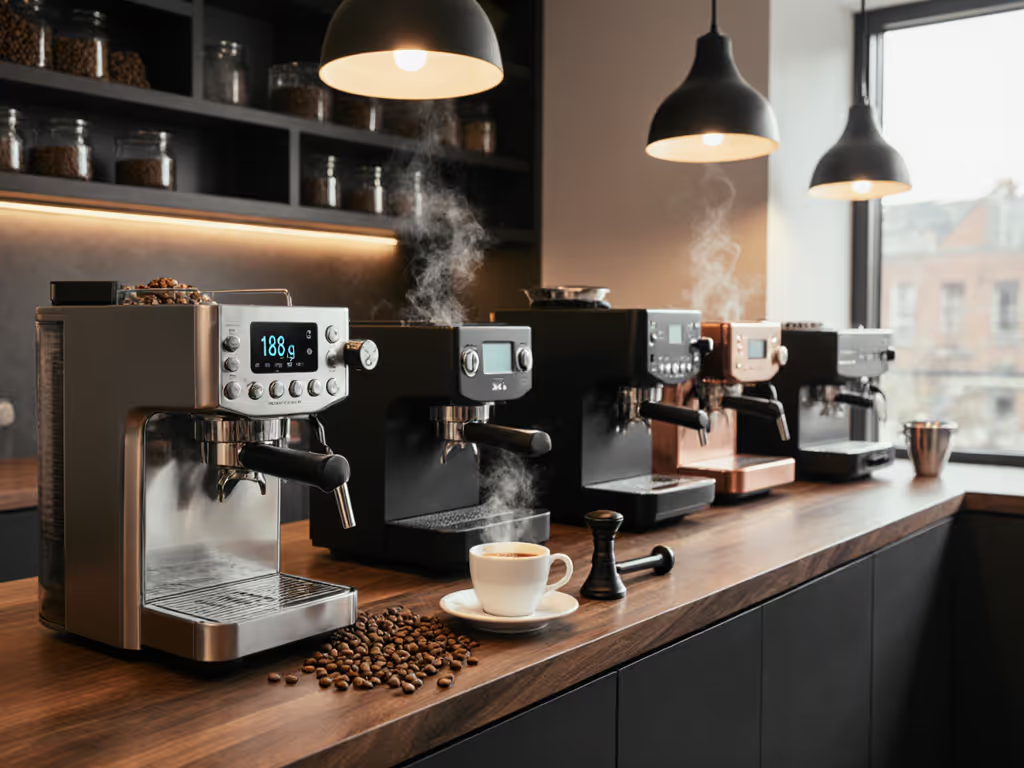
Best Espresso Machines Under $300: Top 5 Tested
Learn which under-$300 options - plus the right grinder and beans - deliver stable, repeatable shots, with simple dial-in settings and workflow tips for a calm, cafe-quality morning routine.
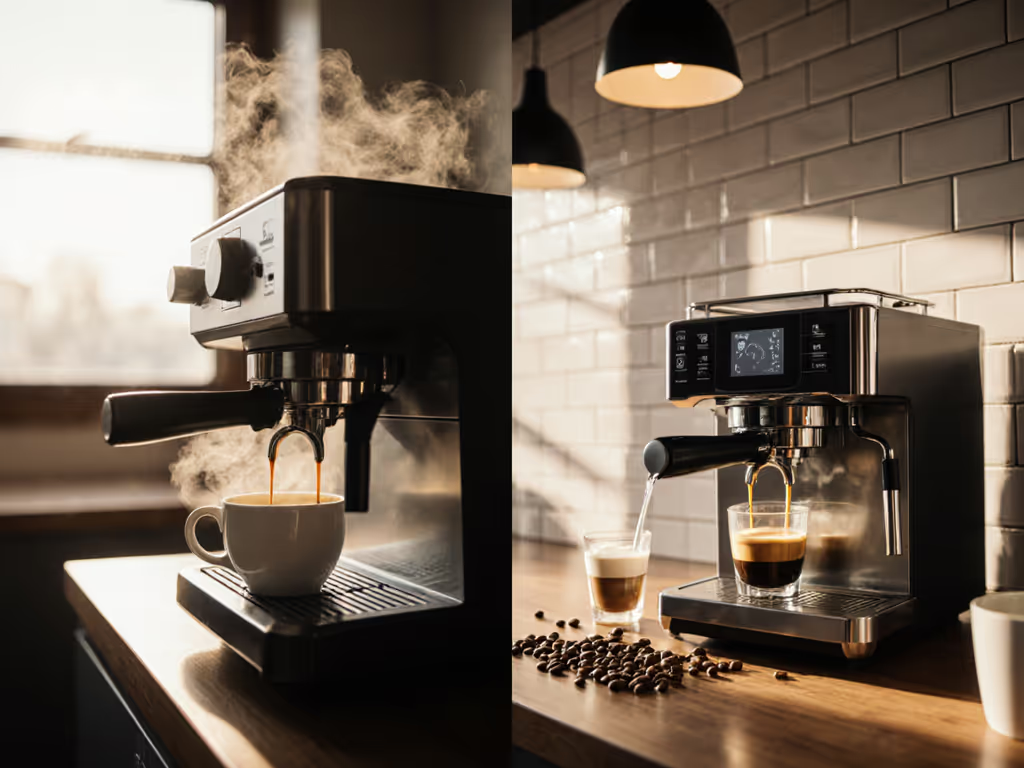
You've probably stared at that "single boiler vs double boiler" comparison for hours, wondering which machine won't turn your morning into a frantic, inconsistent mess. Maybe you're even tempted by a pod espresso machine for simplicity, but you know those capped discs sacrifice the rich, layered taste you crave. As a barista trainer turned home-coffee coach, I've seen countless beginners freeze at complex machines. But here's what I've learned: the right boiler setup isn't about specs, it's about matching your ritual. When you align your gear with your daily rhythm, you replace doubt with confidence. Let's cut through the noise with five practical comparisons that solve real home-barista pain points. You'll discover exactly which boiler style fits your kitchen, budget, and morning timeline... no jargon, just repeatable results.
The pain point: That 7-minute window to make two cappuccinos while kids scramble for backpacks. Single boilers force awkward pauses; dual boilers promise seamless flow, but do they deliver for your schedule?
Single boiler (SBDU): Needs 10-15 minutes to heat up fully. Once hot, brew temp (~200°F) and steam temp (~265°F) share one tank. After pulling a shot, you must switch modes and wait 45-90 seconds for the boiler to reheat for steaming. Result: Two milk drinks take 12-15 minutes. Longer if you're dialing in a new bean.
Dual boiler (DB): Two separate tanks heat simultaneously. Brew boiler stabilizes in 8-12 minutes; steam boiler keeps heating while you brew. No mode-switching means your second shot starts while the first milk steams. Result: Two lattes in 8-10 minutes, critical when alarms blare.
Your move: Time your current routine. If your window is under 10 minutes for multiple drinks, dual boiler is non-negotiable. If you're solo with one espresso most days, single boiler saves counter space and cash. Remember: Constraints aren't limiting, they're your secret weapon for consistent mornings. Bounded choices, repeatable shots, taste you can set a clock to.
The pain point: Watery, bubbly milk because steam pressure tanked mid-frothing. Single boilers lose momentum; dual boilers promise power, but what matters for your drink volume?
Single boiler: Steam pressure drops after 1-2 drinks as the boiler cools. You'll face "flat foam fatigue" by drink #2, especially with larger lattes. Fixing it means flushing old water (wasting heat) or waiting minutes. Taste impact: Inconsistent texture = uneven extraction in milk drinks.
Dual boiler: Dedicated steam boiler maintains rock-steady pressure up to 4+ drinks. Steam wand recovers in 20-30 seconds, even after texturing two 12oz lattes. Taste impact: Silky, integrated microfoam that highlights sweetness, not bitterness from rushed steaming.
Your move: Track your daily milk-drink count. Households making 2+ milk drinks daily need dual boiler's steam recovery. For occasional cappuccinos, single boiler works if you accept minor texture shifts. Pro tip: Calibrate your steam time (e.g., "30 seconds per 8oz milk"). This simple checkpoint turns variables into reliability.
The pain point: Machine rumbling at 6 AM while partner sleeps, or guilt over leaving it on all day. Boiler count directly impacts noise and energy draw.
Single boiler: Smaller heating element = quieter startup (50-60 dB). Draws 800-1,200W but idles at 300-500W once hot. Great for apartment dwellers! Downside: Frequent cycling during use creates pump noise when switching modes.
Dual boiler: Two elements = louder initial heat-up (65-75 dB) but steady operation. Draws 1,500-2,000W and idles at 800-1,000W with both boilers active. Critical if you leave it on for guests, but consider a smart plug for auto-off.
Energy fact: A recent industry study confirmed dual boilers use 40% more standby power. But for most users, the real cost hit comes from leaving it on all day (not the brew itself).
Your move: Prioritize single boiler if counter depth is tight, noise is a dealbreaker, or you brew <3 days/week. Choose dual boiler if you entertain often, but pair it with a timer plug. Sensory anchor: If your wand hiss wakes the house, it's steaming too aggressively. Dial back to gentle "paper tear" sounds for quieter, sweeter milk.
The pain point: One day's espresso is balanced; the next is sour or burnt. Espresso machine temperature stability isn't just jargon, it's the difference between joy and frustration before your first meeting.
Single boiler without PID: Temperature swings 10°F+ during use. Bitter shots when brewing after steaming; sour shots if you steam immediately after brewing. Requires "temperature surfing" (timing shots to boiler cycles), a nightmare for beginners. For step-by-step fixes, see our espresso troubleshooting guide for bitter and sour shots.
Dual boiler with PID: Holds temps within ±1°F. Brew boiler stays locked at 200°F even while steaming. No more guesswork... just stable pressure for clean, sweet extraction. Especially crucial for light roasts.
Your move: If you taste bitterness after milk drinks, your single boiler is overheating. Solution: Pause 90 seconds between steaming and brewing. But if you demand consistent shots across multiple drinks, dual boiler is the only path. This isn't about "pro" status, it's about calibration prompts that build trust in your machine. When temp stability clicks, doubt dissolves.
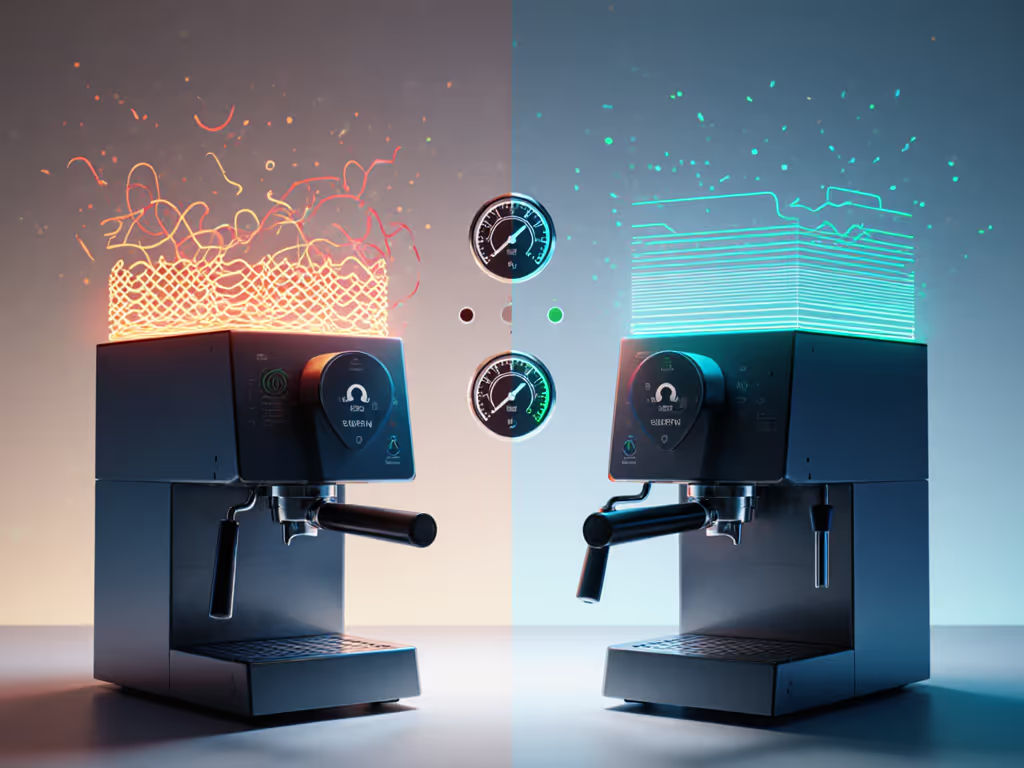
The pain point: Worrying if your machine will outlive its warranty, or if repairs will bankrupt you. Boiler size comparison affects far more than footprint.
| Factor | Single Boiler | Dual Boiler |
|---|---|---|
| Footprint | Compact (12-14" width) | Bulky (16-20" width) |
| Upfront cost | $400-$1,100 | $1,500-$3,500+ |
| Repair cost avg. | $150 (gasket/wand) | $300+ (dual gaskets/PID board) |
| Best for | Solo drinkers, tight budgets | Families, frequent milk drinkers |
The hidden truth: Single boilers have fewer parts to break (one pump, one boiler). But dual boilers often include PID controllers that prevent scale damage by avoiding overheating. Long-term, parts availability matters most. Stick with brands like Lelit or Profitec that stock gaskets for 5+ years.
Your move: Measure your counter depth (including clearance behind). If under 18", single boiler wins. Budget under $900? Single boiler + PID is your sweet spot. Spending $1.5k+? Dual boiler pays off only if you need back-to-back drinks. Sensory anchor: If your shots taste "flat" after 2 weeks, it's scale, not the boiler type. Descale monthly!
You don't need the "best" machine. You need the machine that fits your bounded reality. After training 500+ home baristas, I'll say it plainly:
Forget "pod espresso machine" shortcuts, they sacrifice the craft you're chasing. With the right boiler, your machine becomes a reliable partner, not a puzzle. Constraints create confidence; repeatability breeds better taste. And when you stop fiddling, you start feeling that morning pride.
Ready to find your perfect match? Download my free 5-Minute Home Espresso Audit, a checklist that cuts through specs to match machines to your kitchen, budget, and ritual. No fluff, just the questions that prevent buyer's remorse.

Learn which under-$300 options - plus the right grinder and beans - deliver stable, repeatable shots, with simple dial-in settings and workflow tips for a calm, cafe-quality morning routine.
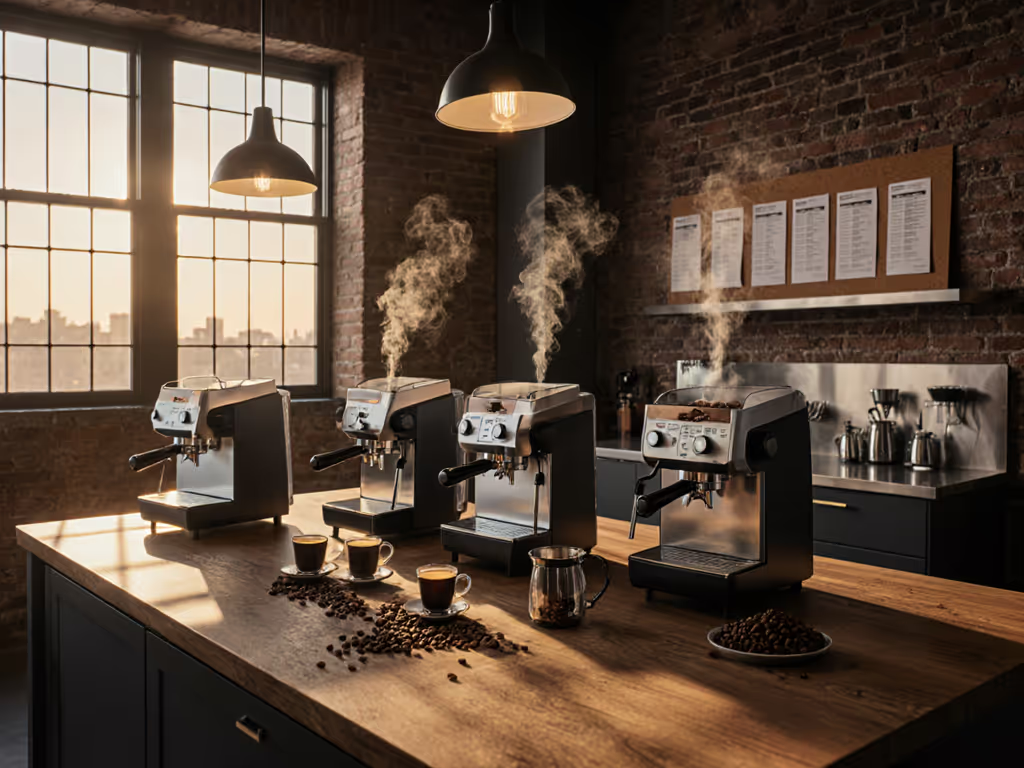
A data-driven look at five compact espresso machines that weighs operational footprint, repairability, and cost-per-shot to reveal the best long-term values and the pitfalls of proprietary designs. Includes a quick pre-buy checklist to avoid hidden costs and downtime.
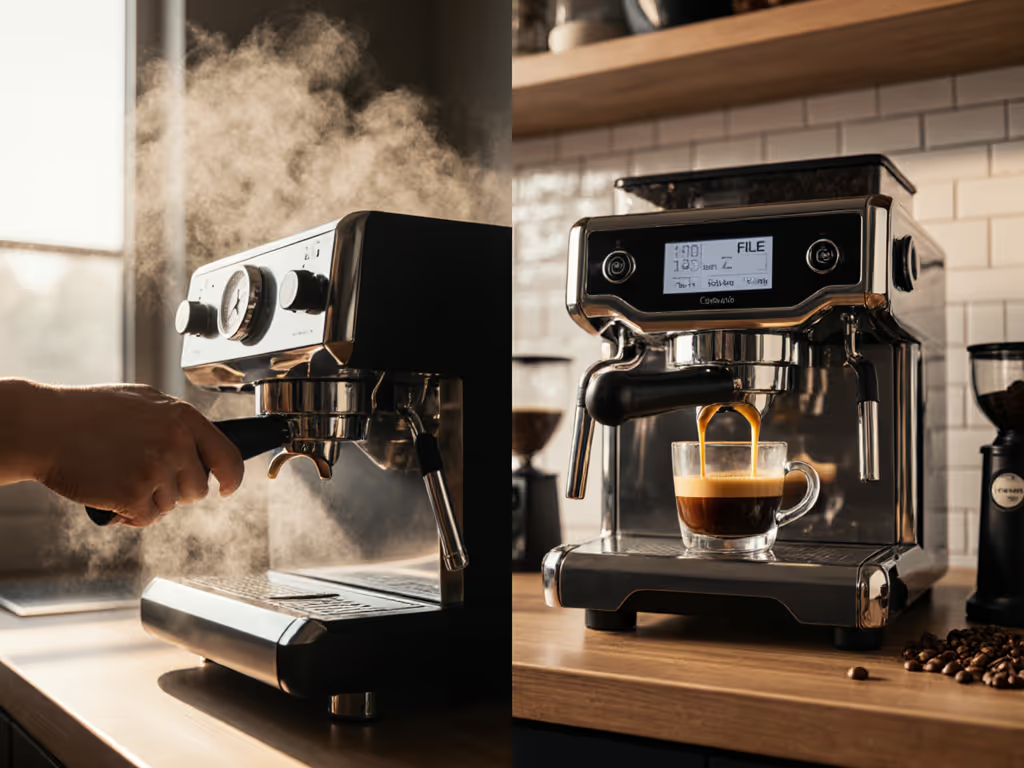
Match manual or semi-automatic espresso machines to your routine by focusing on real-life factors like time, noise, travel, skill level, and drink profile. Then apply a simple dose–grind–time framework to dial in fast, repeatable shots at home.
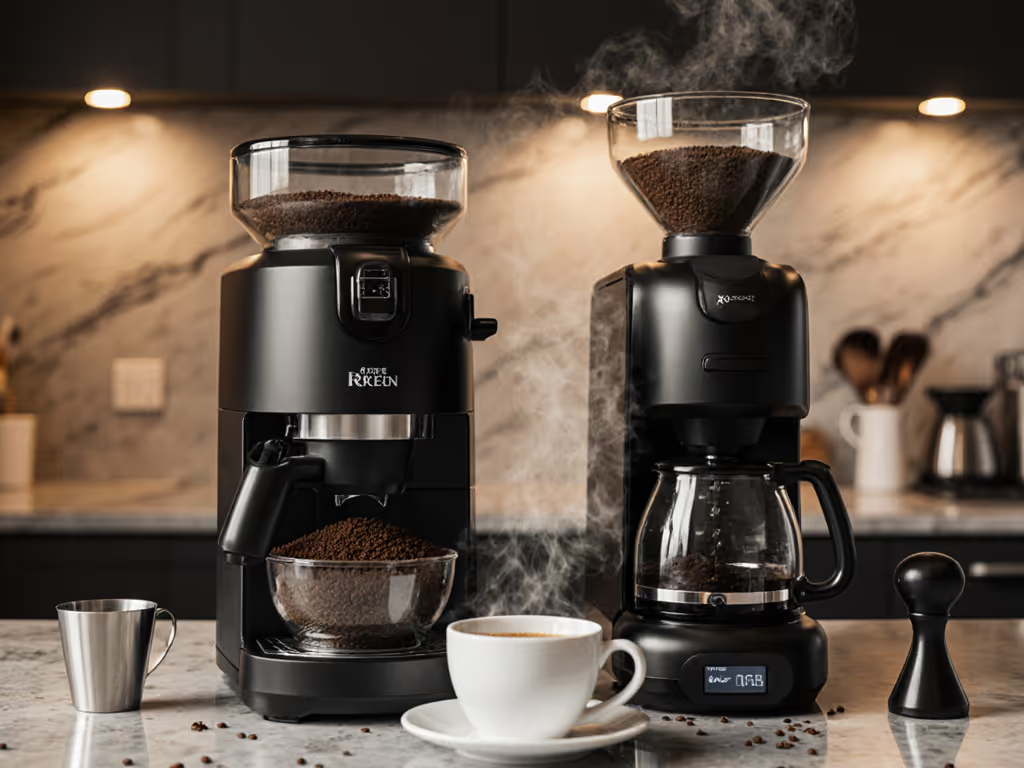
Weigh space, time, and budget to choose the right espresso setup. Understand why a separate grinder often delivers more consistent shots, simpler maintenance, and a smoother upgrade path.